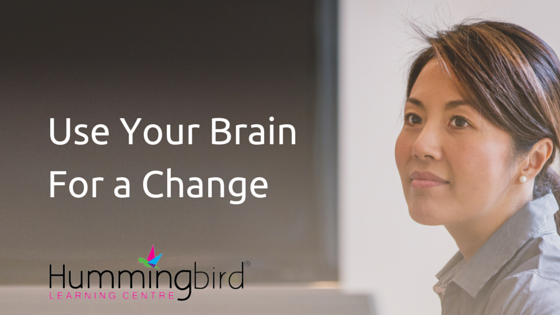When a child is struggling at school, it eventually becomes apparent and supports are available to help them. There are individual resource hours, group resource hours, special needs assistants and a number of waivers available. Granted parents would like more, but over the past 20 years massive improvements in special education needs have been made.
We have names – dyslexia, dyspraxia, dyscalculia, which makes it easier to explain what the specific struggle. These names are loosely called Learning Disabilities but I prefer the term Learning Differences because everybody can learn, but we all learn differently.
Bright children are those who tend to succeed better in a typical school setting. They are the teacher pleasers. They work, perhaps, harder than their gifted counterparts and receive praise for those efforts. They stay out of trouble, are compliant in class, get As, and complete their work. Naturally parents and teachers alike are happy to have these kinds of students.
These qualities often are mistaken as signs of giftedness. This distinction is worth discussion. Based on Janice Szabos’ development of this concept, here are a few ways to understand the differences;
The gifted learner asks the questions; the bright child knows the answer:The bright, above-average student, as previously mentioned is likely to get As. They are great at memorising.They comprehend at a high level, absorb information, and complete their work. The gifted learner, on the other hand, already knows. They have an amazing memory for detail and possesses a lot of information about the topic at hand.
Where the bright child accepts and readily retains information about the topic, the gifted learner manipulates that information in order to draw unique inferences. Certainly, the bright child performs at the top of the group. The gifted learner is the beyond the group.
The gifted learner knows without working hard; the bright child works hard to achieve: For the bright child, the average classroom teacher offers precisely what this student craves: clear expectations, a path to an A, and an environment where this sort of success is rewarded. However, where they may very well earn those As, the gifted learner is far less likely to be motivated at all by grades; where the bright child needs 6-8 repetitions for mastery, the gifted needs only 1-2. Bright children will copy the teacher’s model response to a question or task accurately, while gifted one’s will be original and continually developing.
A bright child enjoys school; the gifted learner enjoys self-directed learning. The bright child is interested and attentive at school; listens to the material and is receptive and enjoys her peers. The gifted learner, conversely, is more than merely interested in the way that seasons change: he is highly curious about it. She shows her attentiveness by staying in her seat and keeping her eyes on the teacher. But he is genuinely mentally–and sometimes physically–involved in the topic. He may have a hard time listening to the discussion of the Earth’s movement around the sun without actually moving his hands and arms in an elliptical fashion. When the lesson in over, she finds her friends; he prefers the teacher or some other adult in the room. Or perhaps he prefers working alone. She is receptive at school; he can be downright intense at school. She may enjoy the curriculum and its pace; he may tolerate it or even rebel against the slowness of it.
The bright child has a good imagination but the gifted learner uses their imagination to experiment with ideas and hunches: Her ideas are clever, but his are original. She can see an alternate route to a solution; he can easily “track” two or more approaches to a similar solution simultaneously. Because she is clever, she can find relationships between loosely connected ideas; but he, perhaps, values the very non-conformity of concepts–and looks for ways to draw even further distinctions between them.
Teasing out the distinctions between Gifted and Bright, for others to see, is not easy. What is required, is defining giftedness as something that is beyond just being a high achiever. Often gifted students are high achievers but, perhaps just as often, they are not. This is why being able to draw the fine line is so important.
Gifted children can struggle at school too, but it is usually not as apparent. Just as some children find it difficult to keep up with their peers, gifted children can find it equally as difficult to hold themselves back and stay at the pace of the rest of the class.
It’s not that they think that they are better than everyone else, just that they simply learn at a different pace. Gifted students can easily fall behind in class because they get bored and switch off. They finish their work sooner and want to walk around or they start talking to other students and interrupt them. Their behaviour can lead to them being labelled as disruptive.
Parents of gifted children face lots of challenges, this first of which is understanding the difference between bright and gifted.
Parents often find bring up the subject of giftedness with the teacher very difficult. They fear being thought of as ‘those kind of parents’, they ones who think that their ‘Johnny is better than everyone else’. They particularly find it difficult when the child has been causing behavioural problems for the teacher. Sometimes teachers don’t recognise the signs. Children are labelled as ‘dreamers’ or ‘switched off’, they ‘lack focus’ or ‘challenge’ the teacher; ‘they ask too many questions’.
Resources are available in schools for gifted students, but as a parent you may need to push for them. Teachers are looking out for learning dis-abilities but it could be that your child’s ability may be holding them back! Be your child’s advocate. An excellent starting point is http://www.giftedkids.ie or contact us here at Hummingbird Learning Centre.
Reference: Janice Szabos as quoted in Differentiating Instruction in the Regular Classroom by Diane Heacox, Free Spirit Publishing, 2001.
















